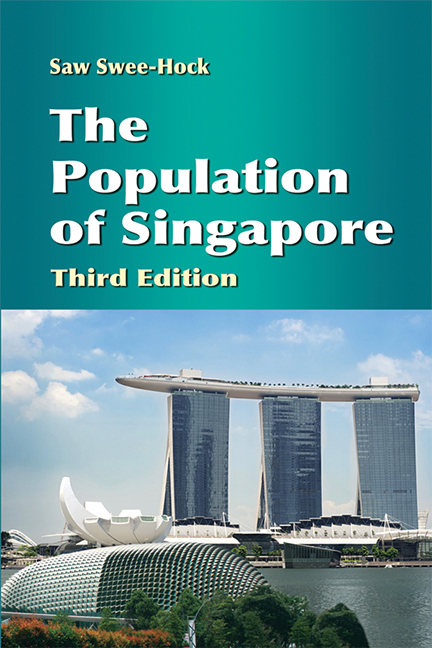Book contents
- Frontmatter
- Contents
- List of Tables
- List of Figures
- Preface
- Preface to Second Edition
- Preface to Third Edition
- 1 Background
- 2 Population Growth and Distribution
- 3 Changing Population Structure
- 4 Migration
- 5 Mortality Trends and Differentials
- 6 Marriage Trends and Patterns
- 7 Divorce Trends and Patterns
- 8 Fertility Trends and Differentials
- 9 Family Planning, Abortion and Sterilisation
- 10 Fertility Policies and Programmes
- 11 Immigration Policies and Programmes
- 12 Labour Force
- 13 Future Population Trends
- Appendix
- Bibliography
- Index
3 - Changing Population Structure
Published online by Cambridge University Press: 21 October 2015
- Frontmatter
- Contents
- List of Tables
- List of Figures
- Preface
- Preface to Second Edition
- Preface to Third Edition
- 1 Background
- 2 Population Growth and Distribution
- 3 Changing Population Structure
- 4 Migration
- 5 Mortality Trends and Differentials
- 6 Marriage Trends and Patterns
- 7 Divorce Trends and Patterns
- 8 Fertility Trends and Differentials
- 9 Family Planning, Abortion and Sterilisation
- 10 Fertility Policies and Programmes
- 11 Immigration Policies and Programmes
- 12 Labour Force
- 13 Future Population Trends
- Appendix
- Bibliography
- Index
Summary
In this chapter we will discuss the structure of the population in terms of ethnic groups, sex composition, age structure, religious composition and citizenship pattern. The structure of the population has evolved over many decades in accordance with not only demographic determinants like migration, mortality and fertility, but also social and economic forces. These variables have exerted their influence in different ways and in varying degrees on each aspect of the population structure. In Singapore, international migration, to be discussed in the next chapter, has left its pervasive and permanent imprint on many facets of the population structure.
ETHNIC AND DIALECT COMPOSITION
The multiracial society of Singapore has evolved from a long history of migration from the nearby countries of Malaysia, Indonesia, China and India since its establishment in 1819. With such a heterogeneous population exhibiting major differences in religion, language, culture and customs, the collection of data on the various ethnic and dialect groups is certainly necessary for the purpose of studying the race differentials in population growth and structure, nuptiality, fertility, and so on. This has always been recognised and the item on race has always been a mandatory one in the census questionnaire used since 1871.
In the population censuses, the concept of ethnic group has been used in the usual sense to connote groups or communities belonging to the same stock or ethnological origin having common bonds of culture, customs, and language. By tradition, the respondents have been classified according to four main ethnic groups in the country, with each group subdivided into specific community or dialect groups. In cases where the person has mixed parentage, the ethnic group of the father has been used. The term “Chinese” covers all persons of Chinese origin, and is subdivided into specific dialect groups such as Hokkien, Teochew, Cantonese, Hainanese, Hakka, and so forth. “Malays” includes all persons of Malay or Indonesian origin, and is subdivided into Malays, Javanese, Boyanese, Bugis, and so forth. The term “Indians” has not been uniformly defined in the past, but nowadays it is used to refer to all persons from the Indian sub-continent, such as Indians, Pakistanis, Bangladeshis, and Sri Lankans. It is subdivided into Tamils, Malayalis, Punjabis, Gujeratis, and so forth.
- Type
- Chapter
- Information
- The Population of Singapore , pp. 27 - 54Publisher: ISEAS–Yusof Ishak InstitutePrint publication year: 2012



